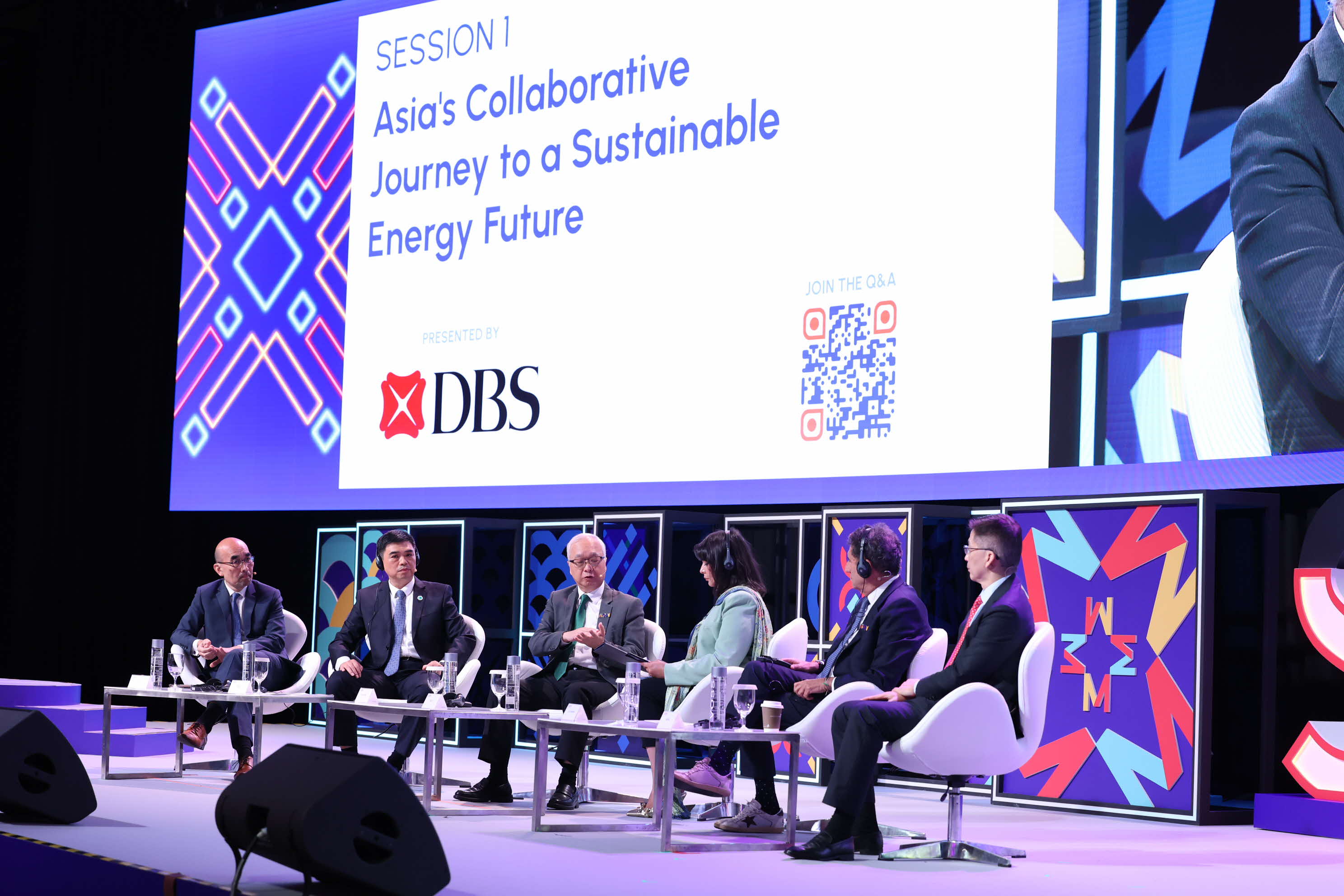Session 1 of the SIEW Summit, on "Asia's Collaborative Journey to a Sustainable Energy Future", highlighted the growing momentum behind investments in variable renewable energy. This shift marks a significant move towards renewables, driven by both governmental and industry collaboration.
Moderated by Rachel Kelly, International Sustainability and Climate Correspondent, the session focused on the importance of targeted collaboration to build a connected and sustainable energy future for Asia.

Investments in renewable energy
Mr Lim Wee Seng, Group Head of Energy, Renewables and Infrastructure, DBS Bank, pointed out that we are approaching the tipping point where investment in renewable energy are surpassing those in fossil fuel. Technologies such as smart meters, energy storage, and hydropower are seeing increased focus.
Mr Lim emphasised the critical role of green transition finance in accelerating this shift, urging a more pragmatic approach to developing more efficient green energy economies. His call to action resonates with the need for practical solutions that can be implemented rapidly to support the energy transition.
Renewable energy growth
His views were supported by Mr Francesco La Camera, Director-General, International Renewable Energy Agency (IRENA). Mr La Camera shared that the global installed renewable energy capacity continues to set new records each year.
While the direction is clear, he cautioned that the current pace of deployment is still not aligned with the carbon reduction targets necessary to meet global climate goals. The gap between ambitions and real-world progress highlights the need for more aggressive scaling of renewable projects.
Connecting supply to demand
Citing the significance of connected system to bring resource to demand, Mr Wong Kim Yin, Group President and Chief Executive Officer, Sembcorp Industries, said Asia's diverse energy demand can accelerate renewable energy development.
He noted that while physical grid connections take time to establish, virtual connections, such as carbon accounting frameworks can play an equally important role in linking energy sources to demand centres. Wong's insight reflects the importance of both physical and digital infrastructure in realising Asia's renewable energy potential.
National infrastructure planning
Further highlighting the need for national infrastructure planning, Mr Pang Xiaogang, President of the State Grid Corporation of China, credited current advancements to the collective actions of committed countries. He emphasised the need for enhanced regional collaboration in technology sharing and funding to support infrastructure development. Mr Pang's comments reinforced the importance of forward-looking national planning in building robust energy systems that can support future demands.
Collaboration and policy support
H.E. Tse Chin-Wan, Secretary of Environment and Ecology, Hong Kong SAR, China, outlined three key elements that could help accelerate collaboration: policy support with clear goals, commitment from industry stakeholders, and the creation of opportunities for dialogue and exchange of ideas. His emphasis on strong policy frameworks and stakeholder engagement aligns with the broader themes of cooperation discussed during the session.
The session concluded with a consensus that while many factors—from land allocation to pricing mechanisms—are crucial for successful renewable energy deployment, government involvement remains pivotal.
Establishing robust legal and regulatory frameworks will be key to fostering meaningful collaboration across Asia, driving the region closer to a connected and sustainable energy future
Stay tuned as the conversation evolves throughout the day. Follow @SIEW_sg on Telegram and Twitter for key insights, as we navigate Day 1 together.